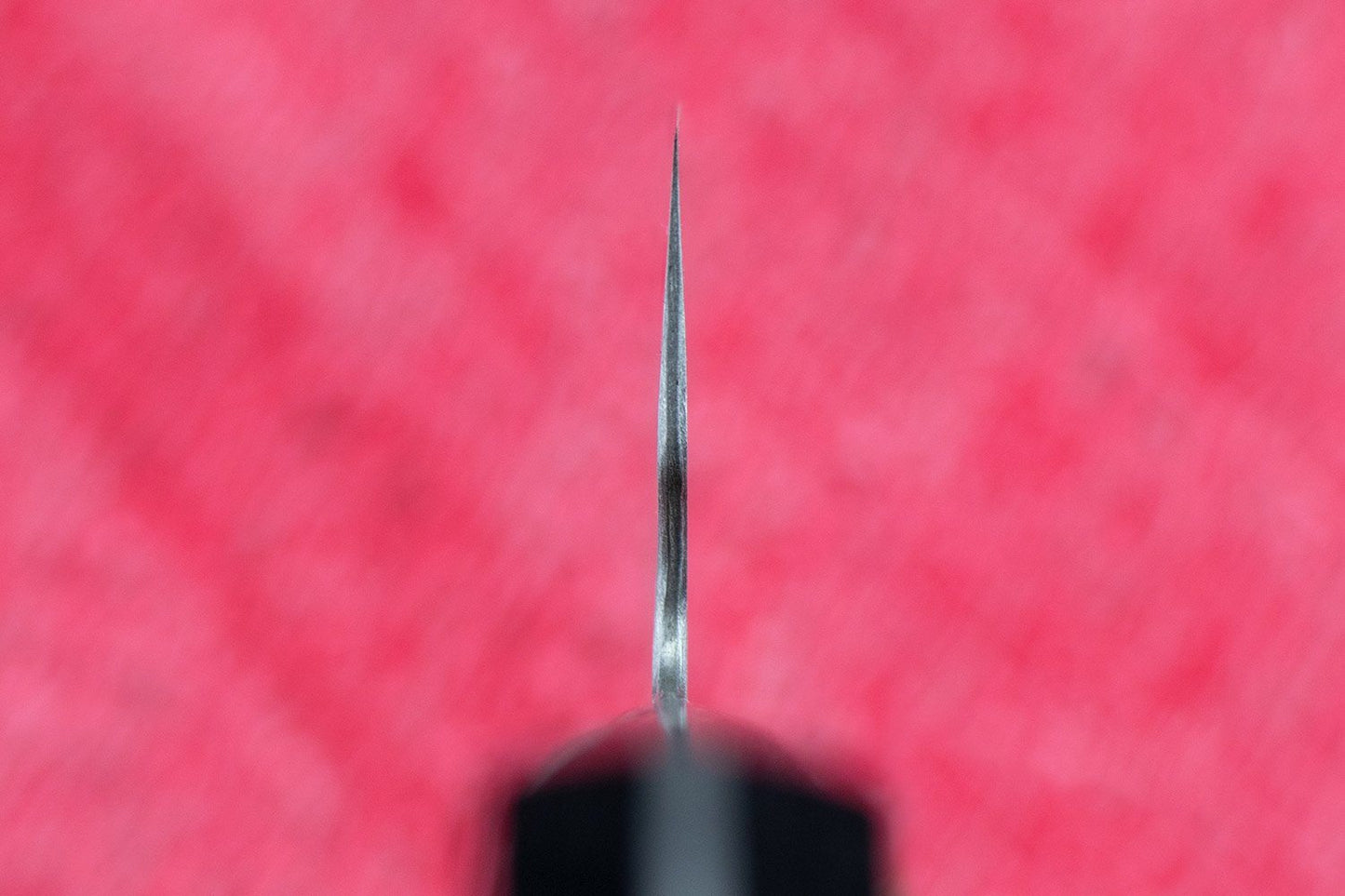Fujiwara Maboroshi Nakiri 165mm
Fujiwara Maboroshi Nakiri 165mm
Couldn't load pickup availability
The Maboroshi no Meito, which translates to ‘Visionary Sword Celebrated in Victory,’ is made from Shirogami steel, and while it requires care to avoid rust, it gets sharper than just about anything else.
Fujiwara is one of the most revered names in the world of Japanese knives. The Fujiwara family started as blacksmiths in 1870, first forging farm tools, then swords. Many blacksmiths these days make a blade with a carbon steel core laminated with an outer layer of stainless steel for a high-performance knife with lower maintenance; this guy was one of the first to develop this technique. In addition to laminating his own steel, he pushes his steel to its absolute limit of hardness. This creates a blade that requires respect and care but stays sharp for a ridiculously long time.
Fujiwara-san knows that chefs hold their knives by the blade in a ‘pinch-grip,’ so he created an iconic notch at the back of the knife for one’s index or middle finger to rest in.
About the Shape - A Nakiri is a vegetable knife. Underutilized in the Western kitchen, the Nakiri’s flat blade is meant for the push/pull chopping of vegetables. Since the entire flat edge of the knife kisses the cutting board at once, you won't be turning the vegetable into an accordion. Accordion vegetables are still connected like a paper doll after you're “done” cutting them. To truly understand the awesomeness of a Nakiri we recommend making onion soup your first night with the knife. The ease of chopping will blow you away.
| Shape | |
|---|---|
| Blade Length | | |
| Blade Height | |
| Blade Thickness Above Heel | |
| Weight | |
| Steel Type |
Rust Prone ⓘ
This knife can rust, click to learn more.
|
| Edge/Bevel | |
| Handle | Western Handle - Pakkawood Metal Bolster |
| Knifeline | Fujiwara Maboroshi |
| Blacksmith | Teruyasu Fujiwara |
| Made in | Tokyo, Japan |
A note about measurements: Handmade Japanese knives can vary in their dimensions, so these measurements are only an example.
Knife Care
Knife Care
Shipping and Returns
Shipping and Returns
We aim to ship your order within 1 business day at Knifewear, if there is a hold up, we'll aim to let you know and give you a timeline.
We offer $3 shipping on orders over $100* anywhere in Canada and $200* to customers in the USA. We ship worldwide, and offer up to the minute rates from our shipping partner DHL.
*Konro Grills and some other larger items are excluded from the free shipping offer.
How do I make a return on an online order?
No worries, we've got you sorted. Head over to https://knifewear.com/returns and follow the prompts.
Can I pick up my order Curbside / At the store?
Absolutely, as long as all the items you are looking for are in stock at the location you want to pickup from, you'll be able to select that at the checkout. If one or more items aren't at your preferred location we are happy to ship it to you.
Request Additional Info
Request Additional Info






